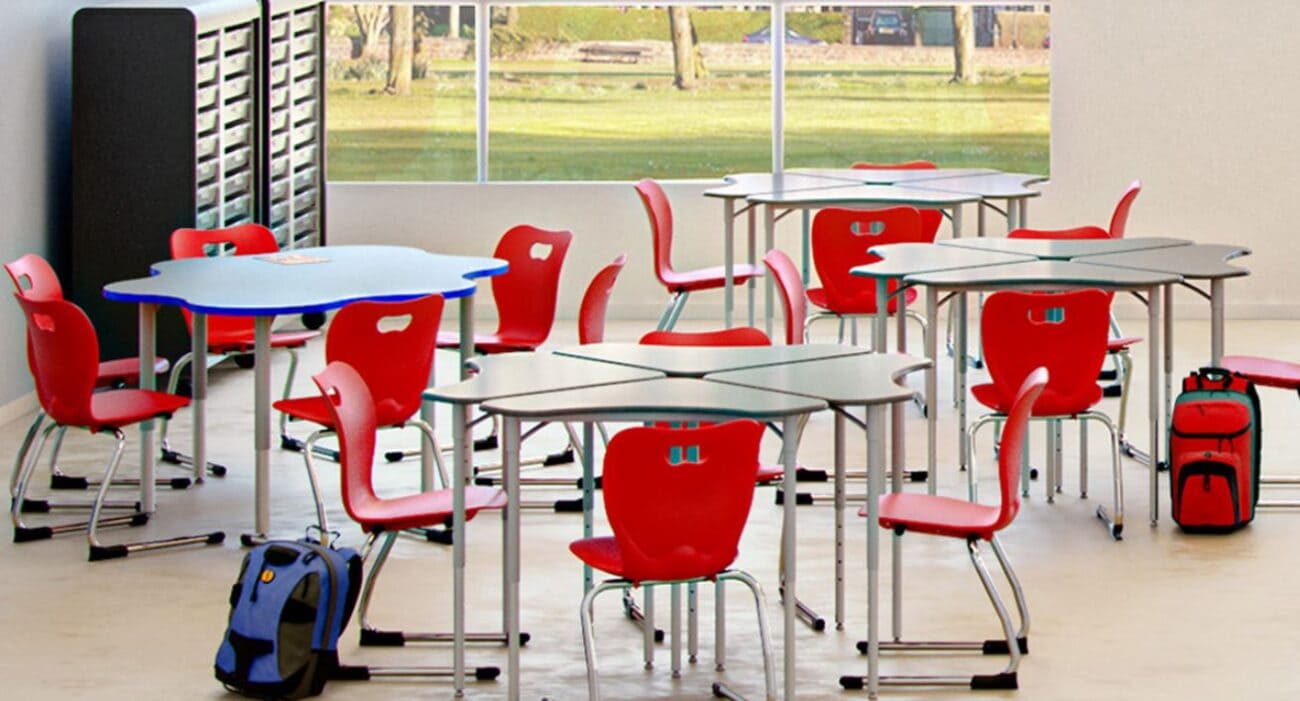01 Feb How Classroom Furniture Empowers Inclusive and Accessible Learning

Universal Design in Classrooms
How Can School Furniture Empower Students?

Creating inclusive and accessible classrooms is an important goal for all educators and dynamic classroom furniture can help achieve these goals. Throughout the country classrooms are filled with students who have unique learning needs, we must design our classrooms and structure our lessons based on inclusion. Tasteful classroom furnishings are essential, but when applied with the principles of universal design for education they can create a learning space that empowers student learning. Ronald Mace, who is accredited for advancing the principles of universal design describes it as “the design of products and environments to be usable to the greatest extent possible by people of all ages and abilities” (Story, Mueller, & Mace, 1998) When applied to education this definition changes slightly:
“Universal design in education means accounting for variability in learners when designing and delivering instruction. Universal design is proactive, rather than reactive, and it starts at the beginning stages of course design.”
–What Is Universal Design, University of Waterloo
How Universal Design Influences Classroom Furnishings

Applying the principles of universal design in education must begin when the curriculum is developed. Planning should begin with the question; how can I make this applicable to as many students as possible? Using a variety of teaching methods at the outset allows for a lesson to reach a broader set of learners. Designing a lesson with inclusion in mind allows a teacher to include students with IEPs in their lesson making inclusion easier. This approach can create a classroom where more gains are seen by all students. Research done by the Western Regional Resource Center shared this example of how inclusive learning environments can engage learners of varying abilities. “A small group of fifth graders sits in a circle taking turns reading aloud from a story in a basal reader. When Stephen’s turn comes, the teacher reads the first phrase and Stephen repeats after her. They continue this call and-answer until it is someone else’s turn. Stephen can’t read. While the other kids work on reading, Stephen works on intonation, articulation, vocabulary, comprehension, and following along in the book, all IEP goals. Though their goals are different, Stephen benefits in many of the same ways the other students do. They are all learning about taking turns, being patient, listening, working in a group, speaking to be understood. Some of them are also learning to read.”
If we plan with inclusion in mind we can apply this to classroom design as well.
“[Universal Design] can be applied to physical spaces to ensure that they are welcoming, comfortable, accessible, attractive, and functional. Specific considerations should be made for climate, entrances and routes of travel, furniture and fixtures, information resources and technology, and safety.”
– Universal Design in Education: Principles and Applications by Sheryl Burgstahler, Ph.D.
For students with physical disabilities, it is especially important to ensure that the classroom is designed with accessibility in mind. Desks with variable heights and special seating may be required. Aisles should be kept free from debris, and wide enough to accommodate mobility aids as needed. A variety of equipment is required accommodate a variety of learning needs: soft seating, focus areas, media centers, group seating are necessary parts of an inclusive classroom. JMC limited specializes in designing dynamic classrooms that allow for student centered learning, an essential part of an inclusive classroom.
Related Links




No Comments